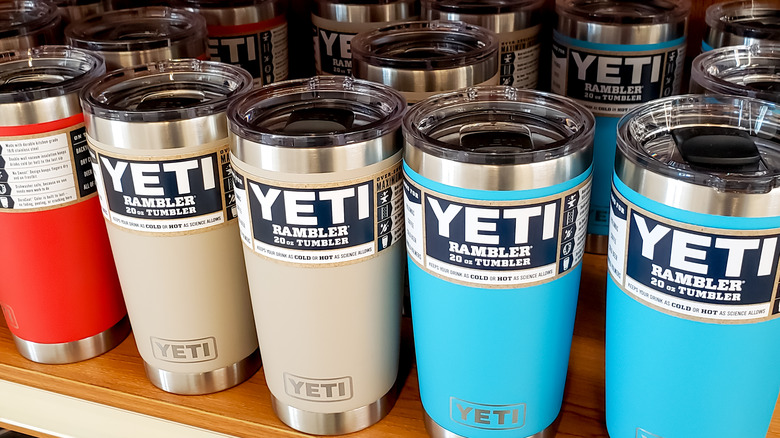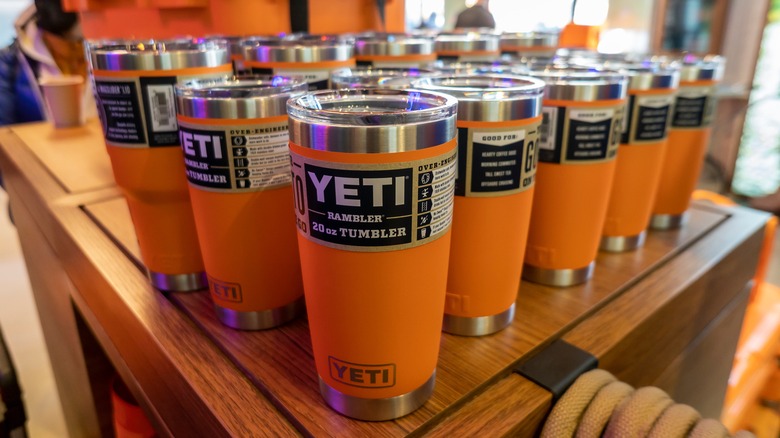Can You Heat Your Yeti Drink Tumbler Over A Campfire?
Yeti drinkware provides some of the highest quality gear on the market, holding its own against competitors like Stanley. Looking back on the history of Yeti, the company's initial focus was making durable premium coolers you could take out in the woods. As the company has evolved, it's branched out into drinkware. Yeti now offers a number of excellent drinkware products, which we've ranked. Most of them share a similar design that excels at keeping your iced tea cold and your hot coffee hot for hours at a time. But if you ever find yourself on a camping trip with a Yeti tumbler full of coffee gone cold, you may be wondering if it's possible to heat it back up by placing the tumbler near the fire.
Let's be perfectly clear: You should never, in any circumstance, set your Yeti drink tumbler in or near an open flame. There's simply no reason to, anyway. The material isn't built to handle that high of a temperature, and the contents of your tumbler are unlikely to heat back up. We'll start by looking at the materials used.
Yeti drinkware has a top-tier design that utilizes vacuum insulation in a double-walled stainless steel interior. This is then wrapped in an aesthetic layer of colorful silicone. General-purpose silicone has a melting point of around 400 degrees Fahrenheit, and a typical campfire has a temperature of 900 degrees Fahrenheit. That means you're more likely to melt the silicone and ruin your nice drinkware than anything else.
Heating liquid in a Yeti tumbler wouldn't work anyway
Even if your Yeti drinkware wasn't wrapped in meltable silicone, a campfire still wouldn't be a good way to heat up your drink. Yeti differentiates itself from competitors through excellent engineering, and the company's method of insulation is pretty smart. Remember that double layer of stainless steel? There's a gap between the two layers that is vacuumed out during manufacturing so that no air (or at least very little air) exists within the gap.
In a typical, single-layer mug, your hot coffee touches the ceramic, thus transferring its heat to the ceramic. The ceramic touches the outside air, thereby transferring its newfound heat to the open air. Because of this, heat energy dissipates, and your coffee grows cold.
While the same premise is at work in a Yeti tumbler, the vacuum insulation that exists between the two layers of stainless steel slows the heat transfer down. There are no molecules of air for the first layer of steel to transfer its heat to, so it retains its heat, keeping your coffee hot. But this works both ways. If you were to set the tumbler in the fire, the outside layer would get hot, but it would have a hard time transferring its heat to the inner layer and then into the coffee. The purpose of the Yeti tumbler's design is to resist heat transfer, which is the exact opposite of what you want when you try to heat something up.

